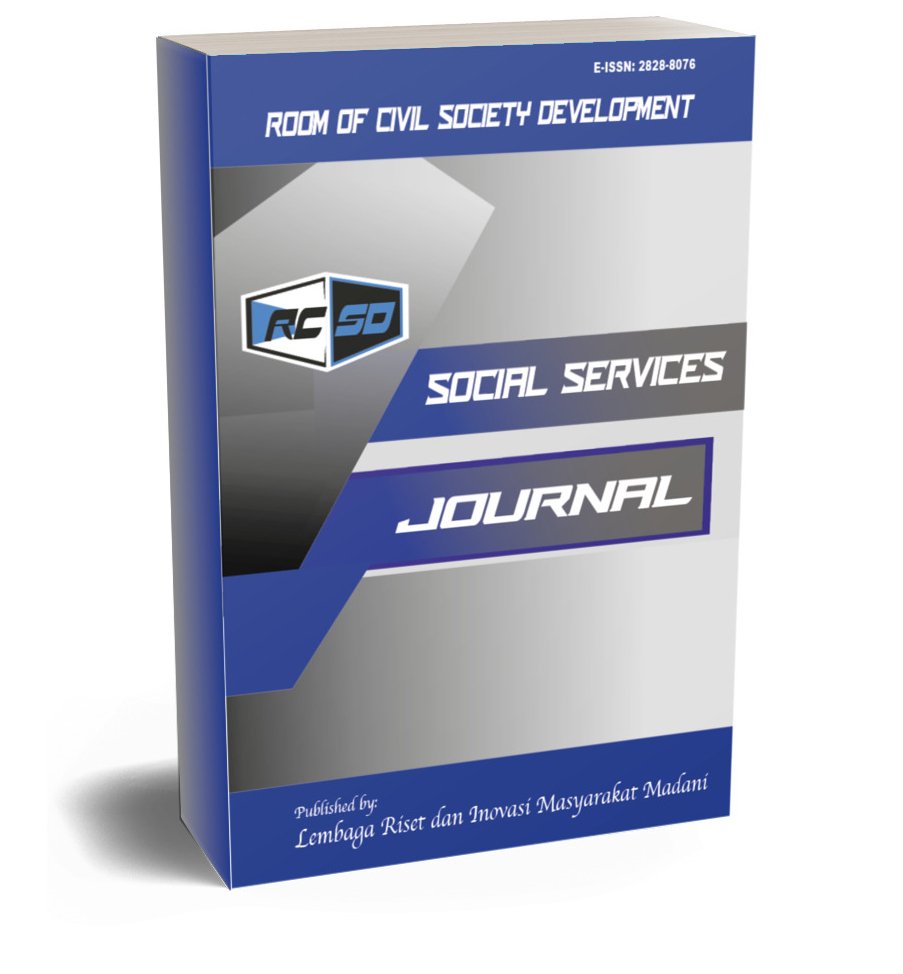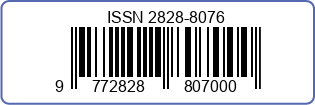Family Empowerment for Pressure Ulcer Prevention in Bedridden Patients at Home in Bababulo Village
https://doi.org/10.59110/rcsd.687
Keywords:
Family Empowerment, Caregiver, Pressure Ulcer, Education, Home CareAbstract
Pressure ulcers are a common and serious health problem among bedridden patients receiving home care, often leading to complications that deteriorate their condition. This community service program aimed to empower families as primary caregivers in preventing pressure ulcers through structured education and practical mentoring. The intervention involved 30 family caregivers and was implemented in two sessions consisting of education and hands-on practice, conducted on May 10, 2025, in Bababulo Village, Pamboang District. Knowledge evaluation was performed using a pre-test and post-test design with 15 structured questions. The results showed a substantial improvement in family knowledge, with the average score increasing from 48.3 to 89.5 after the intervention. Participants initially demonstrated limited understanding of ulcer prevention techniques but became more competent and confident following the sessions. The program not only improved knowledge and caregiving skills but also strengthened emotional engagement and collaboration within families. Despite its success, the short training duration and small sample size were identified as limitations. To ensure sustainability, it is recommended to integrate digital educational materials, continuous follow-up training, and community support networks. Overall, this initiative provides an effective and replicable model for family-based empowerment in home care, contributing to enhanced patient safety and quality of life.
Downloads
References
Aiman, U., Saddique, H., & Jabeen, R. (2024). Nursing knowledge and practice regarding the prevention of pressure ulcer. Biological and Clinical Sciences Research Journal, 2024(1), 1150. https://doi.org/10.54112/bcsrj.v2024i1.1150
Arifin, M., Sekarwana, N., Mediawati, A. S., & Susilaningsih, F. S. (2024). Prospects of e-coaching as a platform for empowering families of persons with mental disorder: A qualitative study. SAGE Open Nursing, 10. https://doi.org/10.1177/23779608241282161
Armanda, P. P., Sari, R. M., Muftiana, E., Isro’in, L., & Sukamto, F. I. (2022). Massage punggung dalam mengatasi risiko luka tekan pada lansia. Health Sciences Journal, 6(2). https://doi.org/10.24269/hsj.v6i2.1563
Bahtiar, B., Muda, I., Khumaidi, K., Aminuddin, M., Nopriyanto, D., & Widiastuti, I. (2022). Edukasi manajemen stres untuk meningkatkan ketahanan diri merawat pada caregiver keluarga lansia di Lempake Kota Samarinda. Jurnal Pengabdian Kepada Masyarakat (NADIMAS), 1(1). https://doi.org/10.31884/nadimas.v1i1.11
Boyko, T. V., Longaker, M. T., & Yang, G. P. (2018). Review of the current management of pressure ulcers. Advances in Wound Care, 7(2). https://doi.org/10.1089/wound.2016.0697
Brodaty, H., & Donkin, M. (2009). Family caregivers of people with dementia. Dialogues in Clinical Neuroscience, 11(2). https://doi.org/10.31887/dcns.2009.11.2/hbrodaty
Cardoso, R., Sá, S., Domingos, A., Sabóia, V., Maia, T., Padilha, J., & Nogueira, G. (2018). Educational technology: A facilitating instrument for elderly care. Revista Brasileira de Enfermagem, 71(Suppl 2), 786–792. https://doi.org/10.1590/0034-7167-2017-0129
Effendy, C., Kurianto, E., Darmayanti, A. R. I., Noviana, U., & Nurjannah, I. (2022). Palliative care education to enhance informal caregivers’ skills in caring for patients with cancer: A scoping review. Open Access Macedonian Journal of Medical Sciences, 10, 69–75. https://doi.org/10.3889/oamjms.2022.7796
Gupta, A. D., & Addison, S. (2020). Healing hand ulcers caused by focal spasticity. International Wound Journal, 17(3). https://doi.org/10.1111/iwj.13335
Henkel Ferro, B., Sidegun Renner, J., Barth, M., Fátima Manfio, E., & Alves dos Santos, G. (2020). Pressure ulcers: Representation of life and death for wheelchair users. International Journal for Innovation Education and Research, 9, 47–57. https://www.ijier.net
Hickmann, E., Richter, P., & Schlieter, H. (2022). All together now: Patient engagement, patient empowerment, and associated terms in personal healthcare. BMC Health Services Research, 22(1), 1–12. https://doi.org/10.1186/s12913-022-08501-5
Kristanto, H., & Atmojo, D. S. (2021). Peningkatan pengetahuan dan keterampilan keluarga dalam pencegahan luka tekan pasca stroke dengan metode drill and practice. Jurnal Keperawatan, 13(1).
McGraw, C. A. (2019). Nurses’ perceptions of the root causes of community-acquired pressure ulcers: Application of the model for examining safety and quality concerns in home healthcare. Journal of Clinical Nursing, 28(3–4). https://doi.org/10.1111/jocn.14652
Mervis, J. S., & Phillips, T. J. (2019). Pressure ulcers: Prevention and management. Journal of the American Academy of Dermatology, 81(4). https://doi.org/10.1016/j.jaad.2018.12.068
Mościcka, P., Cwajda-Białasik, J., Szewczyk, M. T., & Jawień, A. (2022). Healing process, pain and health-related quality of life in patients with venous leg ulcers treated with fish collagen gel: A 12-week randomized single-center study. International Journal of Environmental Research and Public Health, 19(12). https://doi.org/10.3390/ijerph19127108
Rafiei, H., Vanaki, Z., Mohammadi, E., & Hosseinzadeh, K. (2021). The role of family caregivers in pressure injury prevention guidelines: A scoping review. Home Healthcare Now, 39(5), 253–260. https://doi.org/10.1097/NHH.0000000000001000
Ryu, H., & Pratt, W. (2025). Women’s educating and coping strategies for cultivating supportive web-based spaces for discussing sexual and reproductive health: Co-design study. Journal of Medical Internet Research, 27. https://doi.org/10.2196/62716
Spike, J. P. (2018). Obesity, pressure ulcers, and family enablers. American Journal of Bioethics, 18(7). https://doi.org/10.1080/15265161.2018.1478505
Taylor, C., Mulligan, K., & McGraw, C. (2021). Barriers and enablers to the implementation of evidence-based practice in pressure ulcer prevention and management in an integrated community care setting: A qualitative study informed by the theoretical domains framework. Health and Social Care in the Community, 29(3). https://doi.org/10.1111/hsc.13322
Vamos, S., Okan, O., Sentell, T., & Rootman, I. (2020). Making a case for “education for health literacy”: An international perspective. International Journal of Environmental Research and Public Health, 17(4), 1436. https://doi.org/10.3390/ijerph17041436
Visscher, B., Steunenberg, B., Heijmans, M., Hofstede, J., Devillé, W., van der Heide, I., Spreeuwenberg, P., & Rademakers, J. (2018). Evidence on the effectiveness of health literacy interventions in the EU: A systematic review. BMC Public Health, 18(1), 1414. https://doi.org/10.1186/s12889-018-6331-7
World Health Organization. (2022). World Health Organization report on pressure ulcers.
Young, C. (2020). The psychological impact on family members of a patient experiencing pressure ulcers — a reflective account. Wounds UK, 16(2).
Ziegler, S., Schmoor, C., Schöler, L. M., Schepputat, S., Takem, E., Grotejohann, B., Steinbrenner, I., & Feuchtinger, J. (2023). Potential for reducing immobility times using a mobility monitor in-bed sensor system: A stepped-wedge cluster-randomised trial. BMC Nursing, 22(1), 1–10. https://doi.org/10.1186/s12912-023-01658-2
Zuniga, J., Mungai, M., Chism, L., Frost, L., Kakkar, R., & Kyololo, O. B. (2024). Pressure ulcer prevention and treatment interventions in Sub-Saharan Africa: A systematic review. Nursing Outlook, 72(3). https://doi.org/10.1016/j.nursoutlook.2024.02.001
Downloads
Published
How to Cite
Issue
Section
License
Copyright (c) 2025 Hasifah, Maryam Jamaluddin, Tuty Alawiyah, Jamila Kasim, Yuliyanti Setiawati

This work is licensed under a Creative Commons Attribution-ShareAlike 4.0 International License.















